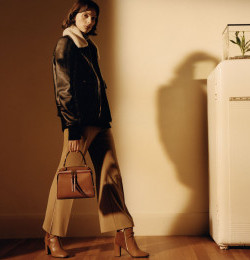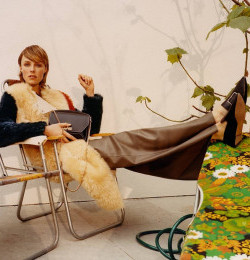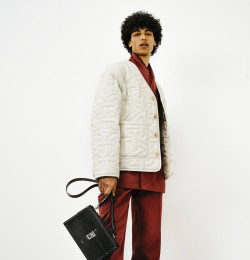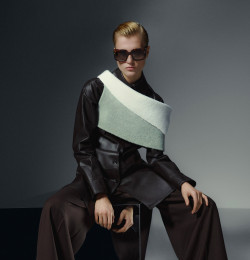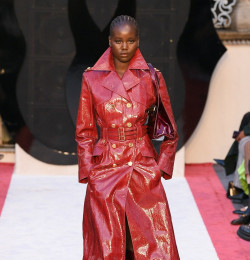

Bally
New York, NY 10017
USA
About
founded by
Carl Franz Bally
belongs to
Bally
about
In 1851 Carl Franz Bally together with his brother founds �Bally & Co�. in the Swiss hamlet of Sch�nenwald he employs German shoemakers who work in the basement of his own home, the �Haus zum Felsgarten�. The first shoes are still entirely handmade but their manufacture is based on the division of labour. After initial problems with production and quality, in 1854 a factory is built in the centre of the village.
When his brother Fritz leaves the business, Carl Franz Bally founds the company �C.F. Bally�. First stores open in Bern, Basle and Zurich and exports to South America begin. In 1868 Bally builds a new elastic ribbon factory and a water channel to provide water-driven turbine power for the first MacKay Sole sewing machine. In 1870 C.F. Bally Co. is at the top of the European shoe industry because of almost entire mechanization of its production. The company quickly expands and opens branches in Montevideo, Buenos Aires, Geneva and Paris. Bally�s shoes become more comfortable, graceful and fashionable, following strong influences from Paris. Though mass-produced, thanks to their excellent finish, quality of the material and refined decoration, Bally shoes already stand for luxury. As of 1880, Bally employs agents to sell its products in Alexandria, Barcelona, Beirut, Brussels, Bucharest, Cairo, Constantinople, Hamburg, Lisbon, Madrid, Marseille, Sofia and Vienna.
In 1892 Carl Franz Bally hands over the business to his sons who rename it C.F. Bally and Sons.
Bally begins using machines to join the upper and lower while most of the work is still done by hand. After a major adaptation to the needs of the market, the British retail organization, the London Shoe Co., is founded and stores open at New Bond Street and Victory Street. Initially baby shoes and silk dancing shoes were exported.
The years after 1900 are determined by an economic boom and free trade without barriers. Important markets are built up in France, Germany, Austria and Italy.
In 1907 Bally becomes a publicly help company � C. F. Bally Co. Ltd. � with a majority stake still in family hands. The Bally realm expands continuously, new production sites in France, new factories in Dottikon and Niderg�sgen, tanneries in Argentina and retail stores in Switzerland are opened.
In 1921 C.F. Bally AG is established as a holding company, comprising five separate divisions; retail, wholesale, production, tannery and real estate. Slowly the economic situation in Europe improves and Bally recovers form the crisis and increases both retail stores and production sites in all parts of the world.
In Switzerland a retail sales company is founded, the Bally Arola AG. The world depression affects Bally�s shoe production and exports.
With the celebration of Bally�s centenary in 1951 a period of boom years begins. Originally inspired by the elegant lifestyle of a luxury hotel, the Scribe, the ultimate men�s dress shoe, joins the Bally line. The name derives from the prestigious Scribe Hotel in Paris, where Max Bally, grandson of C.F. Bally, resides during these years.
As of 1965, increasing imports of low-priced shoes result in the saturation of the Swiss market and exports decline. Bally has to diversify and opens several industries, specialized in rubber, glues and other chemicals, which subsequently become independent. The company increases sales and extends its international distribution. As of 1976. Bally clothing handbags and other leather accessories are added to the product range.
In 1977, for the first time in its history, Bally passed into non-family ownership. Werner K. Rey, a Swiss investor, purchased a majority stake that he quickly sold nine months later to Oerlikon-B�hrle Holding, a Swiss armaments manufacturer. The relevance of the Far East and the US market grows continuously, and in 1988 Bally Japan Ltd. is founded.
Although volume and sales temporarily increase under the new management, the brand is diluted through inappropriate licensing agreements and improper distribution. The worldwide recession significantly affects Bally and a concentration of production sites becomes necessary. This implies the increased use of non-Bally components like heels, lasts and soles.
In 1999 Oerlikon-B�hrle Holding Ltd. sells Bally to Texas Pacific Group, a private American equity fund.
In 2001 Bally celebrates its 150th anniversary
Today Bally is centralized at the company�s Caslano �based headquarters on Switzerland�s Lake Lugano, close to Milan. Bally�s new CEO Marc Franchini assembles an international design team to completely redefine the company�s image and product offering.
In 2003 a new showroom in Milan is opened to facilitate the reception of worldwide press and buyers during runway shows and collection presentations.
A new production structure is being put in place in order to ensure a high level of quality control. Shoes are mainly produced in Caslano, while development and coordination of accessory production takes place in Florence and ready-to-wear is being developed in Ancona.
There are currently about 200 single-brand stores around the world, and Bally will continue to roll out new stores and refurbish existing units based on its newly developed store concept.
Bally have now set up their womenswear line. Alessandro Dell'Aqua was the designer for some time in 2001 followed by Scott Fellows from 1999-2002. Melissa Maish had worked at Bally till 1999 before Fellows, and after he left, she was called back in 2002 to oversee womenswear design again. In 2005 Luca Ragonese used the Bally family crest on colourful T-shirts and Jonny Coca creates harmonized accessories.
Perfumes
Official Social Media
Latest Bally Advertisements

